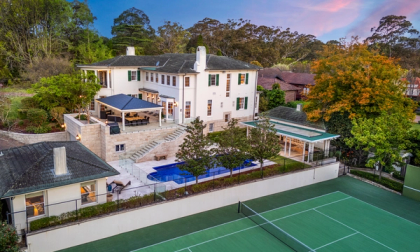
6 things impacting property prices on Sydney’s Upper North Shore
Ku-ring-gai’s property market has so far proven to be remarkably resilient in the face of the COVID-19 pandemic. We explore six factors behind the real estate market on Sydney’s Upper North Shore. What’s happening to Ku-ring-gai property prices in October 2020? Despite widespread predictions of tumbling property price, the Upper North Shore house market so far hasn’t missed a beat since the coronavirus first hit. At the start of the year, the median house price in Wahroonga was $1,916,250 according to realestate.com.au. By the end of September, the median Wahroonga house price had risen to $2,130,000. The same pattern is true for other key North Shore suburbs. In neighbouring Turramurra, the median house price has risen $300,000 or 15.7% since the start of the year. Pymble’s median house price has also risen from $2,365,000 to $2,450,000 between January and September and St Ives’ has risen from $1,915,000 to $2,000,000. It has been a different story for apartments. While prices may not have not fallen, they have not enjoyed the same growth as house prices. For instance, Wahroonga’s median unit price has risen just $25,000 since 2020 began while Turramurra’s median unit price has risen $22,500. With that in mind, here are the six factors we’re seeing underpin these current market conditions.
Lack of stock
You can’t talk about the current Upper North Shore property market without first mentioning the lack of stock. In our many combined decades of experience, none of us can remember a time when so few people were coming to market. This is mainly because people are taking a ‘wait and see’ approach – deciding to postpone a move until the extent of the current recession becomes clearer.
We’ve noticed that the lack of stock is most acute at the higher end of the market. There are a lot of people interested in large homes on the Upper North Shore and far too few quality properties. This is a trend that’s happening in all prestige markets across Sydney.
This means, if you’re thinking of selling the family home to downsize, there has rarely been a better time to do so. It also means, if you’re buying in this price bracket, it pays to act decisively.
Low interest rates
Another important factor we’re seeing in the market right now is the impact of low interest rates. It’s not just that rates are at historic lows, it’s also that the RBA has more or less guaranteed that this low interest rate environment will continue for some time to come. This gives tremendous certainty to those buyers with stable jobs that they’ll be able to keep paying the mortgage for years to come. As a result, we’re seeing some buyers prepared to put their best foot forward even in the face of economic uncertainty. The upsizers are here in force.
The uneven impact of coronavirus
The coronavirus has impacted different occupations and sectors differently. And that is flowing onto the property market.
Here on the Upper North Shore, residents are overwhelmingly employed in white-collar jobs, especially professional and managerial services. COVID-19 has impacted these sectors less than many other areas of the economy.
As a result, people have more to spend on real estate and feel more confident about moving up the property ladder.
The return of first home buyers
In welcome news, we’re also seeing comparatively more first home buyers enter the market than we can remember in recent history. These buyers are taking advantage of low interest rates, which are often complemented by generous government grants, such as stamp duty exemptions and concessions, the First Home Loan Deposit Scheme and even the first home owner grant for newbuilds. What we’re seeing is again a trend that’s happening across the country. According to ABS figures for August, first home buyer loan commitments rose 18.4% over the month and 38.4% over the year.
Lack of investors
The flipside is that we’re seeing very few investors in our local market, which partly explains why apartment prices are relatively neutral even in the face of first home owner interest.
Anecdotally, investors often tell us they’re staying away until the economic outlook becomes clearer. They are often also waiting for the borders to reopen and the population to return to growth – something vital for the rental market. Some investors have also been attracted to the share market given recent ASX gains.
Home renovations
COVID-19 has seen a lot of us spending a lot more time at home. As a result, a lot of people have started embarking on renovation projects.
Many of these renovations have been driven by the increased need to work from home. We’re seeing a lot of home offices and granny flats being added, as well as more traditional renovations.
This helps explain one of the reasons we’re seeing fewer properties on the market – with homeowners choosing to upgrade their existing home rather than upsize somewhere new. It also means when people do eventually sell, they may be selling much larger houses than they once were.
A final word
The Upper North Shore property market has held up well during the COVID-19 pandemic. Given that many of the factors underpinning today’s real estate market look set to continue for some time, we expect that when the economy turns, we may well see prices rise rapidly. If you’re interested in buying or selling property on Sydney’s Upper North Shore, contact our team today- +61 2 9449 4444.
Other buying, selling and investing articles and resources
Guide to property investment success in NSW
Selling a house or apartment in NSW eBook
Buying a house or apartment in NSW eBook
Was this content helpful to you?





